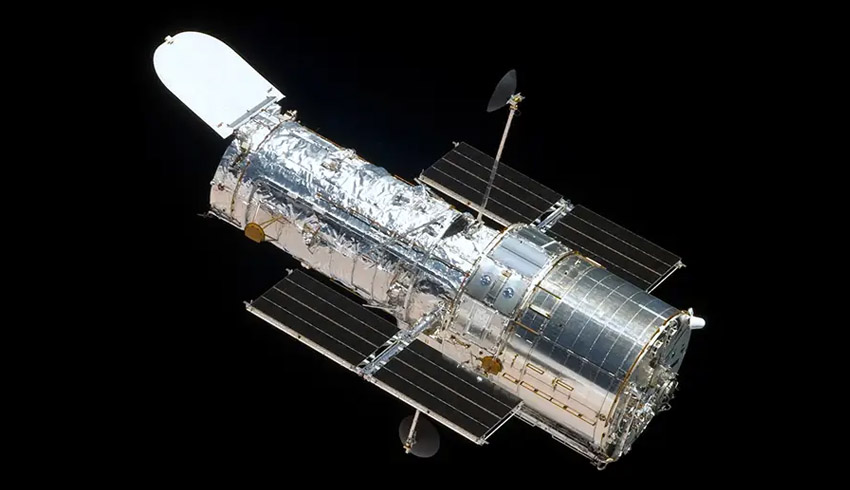Since last week, NASA has performed a series of multi-day tests on the Hubble’s primary and backup computer systems, which included attempts to restart and reconfigure the computer and the backup computer, all of which yielded no result.
However, NASA has now said the information it gathered from those tests has led the Hubble team to determine that the telescope’s issues could step from its Power Control Unit (PCU).
The PCU resides in the same unit as the primary payload computer – with both residing in the Science Instrument Command and Data Handling (SI C&DH) unit.
The PCU ensures a steady supply of five volts of electricity is provided to the payload computer and its memory hardware.
A secondary protection circuit monitors voltage levels leaving the PCU’s power regulator, and if the voltage falls outside of its ‘allowable levels’, this secondary unit is designed to tell the payload computer to cease operations – like it has done since 13 June.
Currently, NASA’s Hubble team believed that either the voltage level from the regulator is falling outside the secondary unit’s allowable levels, and triggering it tell the payload the cease operations, or the secondary unit is malfunctioning due to degradation and is stuck in this “inhibit state”, keeping the payload computer from functioning.
In light of this potential diagnosis, the Hubble team will switch the primary payload computer’s operations over to its backup unit, which includes a backup PCU.
NASA has spent the last week or so preparing for the switch, with all procedures and tests completed and reviewed ahead of the move.
The switch is due to begin on Thursday, 15 July, and could take several days to complete.
The Hubble team then expects the telescope to return to normal science operations within the coming days.
A similar switch between computer systems was performed in 2008, when another unit within the SI C&DH failed. A 2009 servicing mission then replaced the whole SI C&DH unit with the primary unit now in use.
The primary payload computer, that is, the one experiencing the glitch, is responsible for controlling and coordinating the scientific instruments onboard Hubble.
The 13 June glitch saw this computer halt, and place all science instruments into a ‘safe-mode’ configuration. It has ultimately left the flying observatory shutdown since the glitch occurred.
While it isn’t the first problem experienced by the telescope, it is the first time Hubble has remained blind for this extended period of time.
Despite this, NASA has previously said, “The telescope itself and its science instruments remain in good health and are currently in a safe configuration.”
First deployed in 1990, the Hubble Space Telescope is largely considered one of NASA’s most successful science instruments.
In the three decades since its deployment, Hubble has made over 1.5 million observations, including black holes, nebulas and new galaxies, expanding our understanding of the wider universe.
“Hubble has peered back into our universe’s distant past, to locations more than 13.4 billion light years from Earth, capturing galaxies merging, probing the supermassive black holes that lurk in their depths, and helping us better understand the history of the expanding universe,” NASA said.
“In its over 30 years of operation, Hubble has made observations that have captured humanity’s imaginations and deepened our knowledge of the cosmos.”

Hannah Dowling
Writer – Defence and Aerospace, Momentum Media
Hannah joined Momentum as a journalist in 2019, and has since written breaking news stories across a diverse range of corporate industries, including finance, real estate, investments and aviation. She has a keen interest in the global aviation sector, with a particualy focus on improving overall individual wellbeing across the aerospace industry.
Hannah graduated from Macquarie University in Sydney Australia with a Bachelor of Media (Journalism) and is currently pursuing postgraduate studies.
Send Hannah an email at [email protected] or connect via Twitter or LinkedIn.

